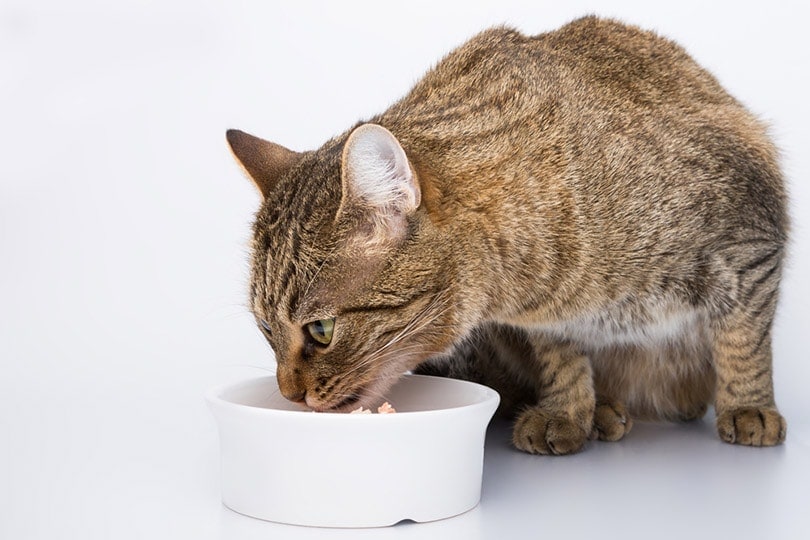Fungal Infection in Cats: Vet-Explained Causes, Prevention & Signs

Updated on
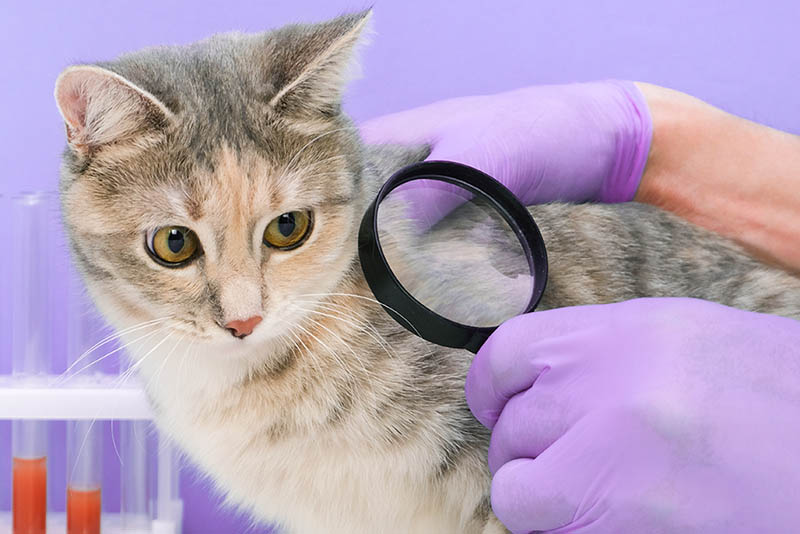
Fungal infections are caused by fungi, parasitic organisms that produce spores. Infections can become established by ingestion, inhalation, or directly through the skin. Fungal infections are a common and serious problem for cats. One of the main concerns regarding fungal infections is that some of them are zoonotic. This means they can easily be passed on to humans.
This article explores the causes, signs, and treatment options for fungal infections in cats and will support you if you are dealing with this at home.
What are Fungal infections?
Fungal infections are caused by fungi. They form a parasitic relationship with their host by feeding off them to gain nourishment. There are many different species of fungi in your cat’s environment, however, only a select few are capable of causing disease. Most cats encounter fungi in the soil in their environment. Cats become infected by ingestion, inhalation, or contamination of broken skin. Cats can spread infections to one another, and as some fungi are zoonotic, some infections can be passed to humans too.
Some fungi are able to establish an infection in a healthy cat, whereas others are only able to cause disease if the animal is already immunosuppressed in some way. Fungi infections can become established in various parts of the body, and this can sometimes make diagnosis challenging. The skin is one of the most common places for cats to become infected.
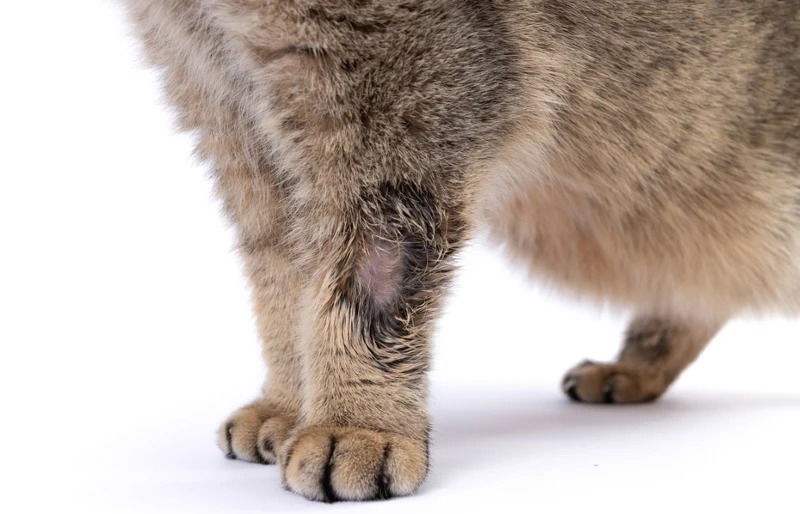
What Are the Signs of Fungal Infections in Cats?
The signs displayed by your cat will depend on the type of infection and most importantly the location of the infection. Common signs of fungal infections are listed below:
- Skin lesions
- Hair loss
- Redness/inflammation of the skin
- Crusting/flaking of the skin
- Cysts
- Sneezing
- Discharge from nostrils (sometimes with blood present)
- Swelling of nose
- Coughing
- Neurological deficits
- Eye infections
- Sight impairment/loss of sight
- Lethargy
- Breathing issues
- Reduced appetite
- Exercise intolerance
- Weight loss
- Poor body condition
- High temperature
- Urinary tract infections
- Seizure activity
- Paralysis
As you can see, there are a wide variety of signs that your cat may experience. This sometimes makes it difficult to spot early infections as some of the signs are generalized and non-specific, meaning fungal infections can go undetected for some time.
What Are the Causes of Fungal Infections in Cats?
There are many different fungi that are able to establish an infection in your cat. Some are seen more often than others. Below the more common causes of fungal infections are discussed:
- Aspergillosis. Aspergillus species usually cause respiratory infections. It initially affects the nasal cavities, sinuses, and lungs. It can also spread throughout the body. Cats with concurrent illness or that are immunosuppressed are more likely to be infected.
- Dermatophytosis. Dermatophytosis causes fungal skin disease in cats. It is also known as ringworm but has nothing to do with actual worms. It causes circular lesions where hair falls out and the skin is dry and crusty. It is zoonotic and can be spread easily.
- Candidiasis. Candidiasis causes a local infection, and it usually affects mucous membranes and the skin. It is relatively rare in cats but can cause lesions in the mouth, respiratory tract, eye, lungs, intestines, and bladder.
- Cryptococcosis. Cryptococcosis is another fungal disease that affects the nasal cavity. It can also spread to the nervous system, eyes, and sometimes affects the skin. It is usually contracted from the soil or droppings of birds such as pigeons when close contact occurs. Spores are inhaled or contaminate wounds.
- Coccidioidomycosis. Coccidioidomycosis is a non-contagious infection usually found in dust. It causes respiratory infections initially, but skin issues, high temperature, reduced appetite, and weight loss are also seen. If left untreated it can spread to multiple locations.
- Histoplasmosis. Histoplasmosis is found in soil and affects the lungs and the thoracic lymph nodes primarily. It can spread systemically and cause serious disease which is challenging to treat.
- Eumycotic Mycetomas. These are infections of the skin caused by fungi. They appear as masses on the skin. In severe cases, they can spread to the underlying bone, but they are relatively rare in cats.
- Blastomycosis. This is normally only found in certain areas of America. It is inhaled and establishes an infection in the lungs which can spread to the bloodstream.
- Rhinosporidiosis. Rhinosporidiosis is usually found in the nasal passages and the skin. It causes growths to form which can occlude the nasal passages.
- Sporotrichosis. Sporotrichosis causes chronic disease. Its usual route of entrance is through skin wounds. It can readily be passed from animal to human too. The head area is most likely to be affected in cats.
- Phaeohyphomycosis. Phaeohyphomycosis is the collective name for fungal infection by Dematiaceae fungi. It is an uncommon infection. It usually affects the skin and can form painful ulcers.
Both indoor and outdoor cats can get fungal infections, however, outdoor cats are more likely to become infected due to increased exposure in their environment. Some cats can carry the fungi without having an active infection, meaning they are not clinically ill, but they can still spread the disease. Fungi are opportunistic, and they establish infections usually when there is an open wound or if the host has a compromised immune system. Fungal infections are often diagnosed alongside bacterial or viral infections.
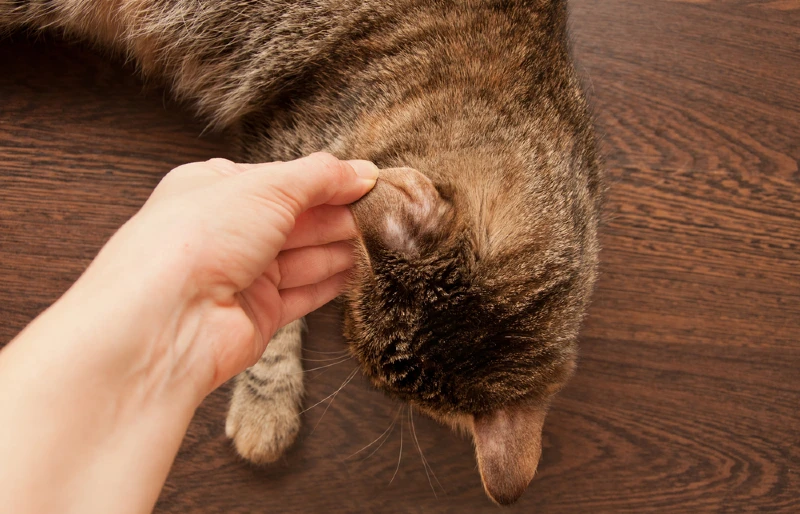
Diagnosis of Fungal Infections in Cats
Diagnosis of fungal infections can be challenging as signs can be nonspecific or well disguised.
Your vet will take a full clinical history including any previous injuries and details of their day-to-day habits. Your vet will then examine your cat from head to toe and note any abnormalities.
Next, your vet will take a blood sample and a urine sample. If there is an obvious lesion present, tissue samples will be taken for analysis.
Depending on the site of the lesion, this may require sedation or a general anesthetic. Types of samples include:
- Skin scrapes and cytology – Scraping off a sample of the cells on the surface of the skin to be looked at under the microscope.
- Examination with a Woods lamp – A special light that causes some species of fungi to glow in a fluorescent color.
- Dermatophyte culture – This involves taking a sample from the skin and placing it on a petri dish to allow whatever is on there to grow.
- Trichogram – Where hair follicles and scales are analyzed under the microscope.
- Biopsy – Taking a larger sample size to be analyzed in the lab, from, for example, a mass.
How Do I Care for a Cat with a Fungal Infection?
Treatment options depend on the location and clinical signs, as well as the type of fungi infection.
The full clinical picture must be considered for the cat. This means any underlying health conditions must be addressed, and appropriate treatment administered. For example, antibiotics for infections, anti-parasite medication, and any concurrent disease present, as this will suppress the immune system. Care must be taken if a zoonotic disease has been identified. Some cases will need to be isolated from the general public to prevent spread.
If you are treating your cat at home, barrier nursing may be necessary, for example, wearing a gown and gloves, and a mask when handling your cat and their litter, then discarding them afterward to prevent contamination.
Treatment options include:
- Topical creams for skin lesions such as miconazole cream.
- Oral antifungal medication such as Itraconazole and Fluconazole. Some may require a long-term course.
- Surgery. If a mass or localized lesion is present, your vet may decide to remove it under general anesthetic.
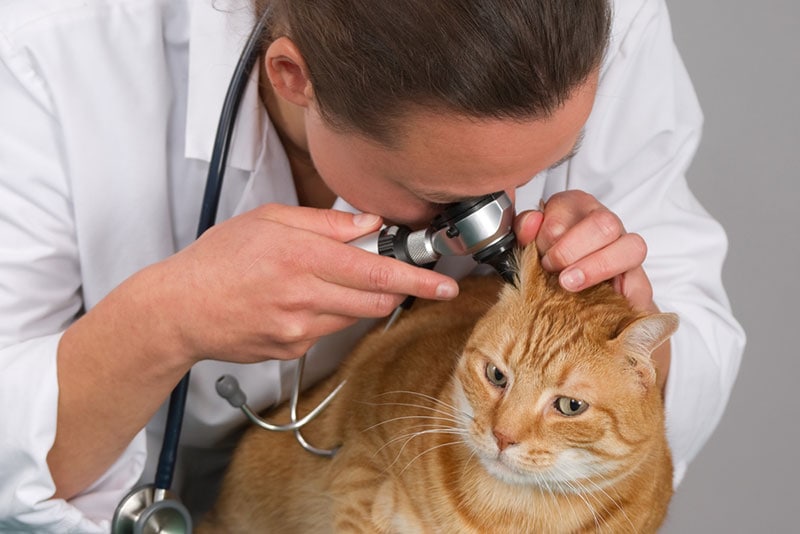
Frequently Asked Questions (FAQs)
How long does it take to treat fungal infections in cats?
The time taken to treat fungal infections in cats does depend on the type of fungi and the location. Most infections are treated for a minimum of 6 weeks, but some take considerably longer. It is important to treat the infection for the correct amount of time as if too short a course is used, there is a high chance of the infection recurring. Reinfection occurs easily as the spores of the fungi are readily shed into the environment.
Can cat fungal infections spread to humans?
Unfortunately, the answer to this is yes, some cat fungal infections can spread to humans, including:
- Sporotrichosis
- Cryptosporidiosis
- Dermatophytosis
- Blastomycosis
- Dermatophytosis
They can all be passed on to humans by various means. If you know your cat has been infected by one of these, they must be isolated. This can be either in your home or at your veterinary hospital if they have the facilities. Extra care must be taken when handling your cat and their excrement to prevent the spread of the infection.
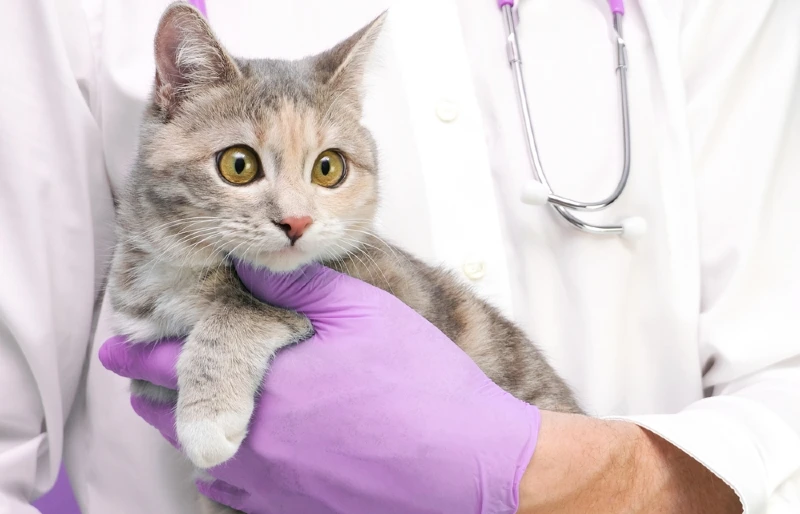
What are the most common fungal infections in cats?
The most common fungal infections seen in cats are:
- Aspergillosis
- Coccidioidomycosis
- Candidiasis
- Cryptococcosis
- Histoplasmosis
These fungi may affect specific areas as a localized infection, or they may cause systemic disease. Fungal skin infections are the most common type of infection in cats. Systemic infections are rare but can be very serious.
Final Thoughts
Fungi infections are relatively common and can be challenging to treat in cats. There are many different types, and they can manifest in different ways. The type of infection your cat has will dictate the prognosis and recovery. Some are easily treated and fully resolve while others require extensive courses of treatment and cause long-term health issues.
Your cat is more susceptible to fungal infections if they are ill with a disease already or if they are immunosuppressed in any way. It is very important to finish any medication from your vet and attend follow-up appointments to ensure reinfection has not occurred.
Featured Image Credit: lev.studio, Shutterstock


